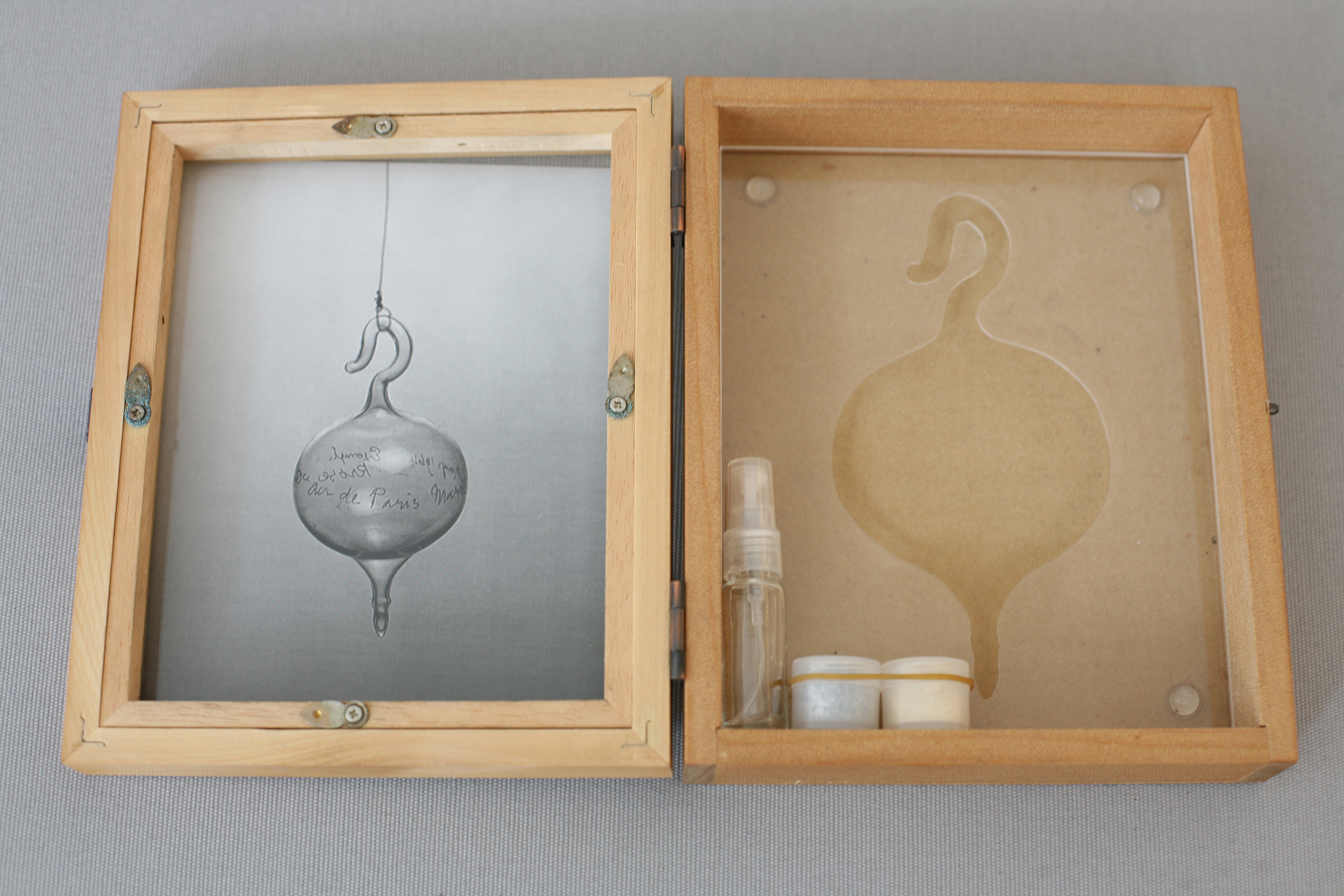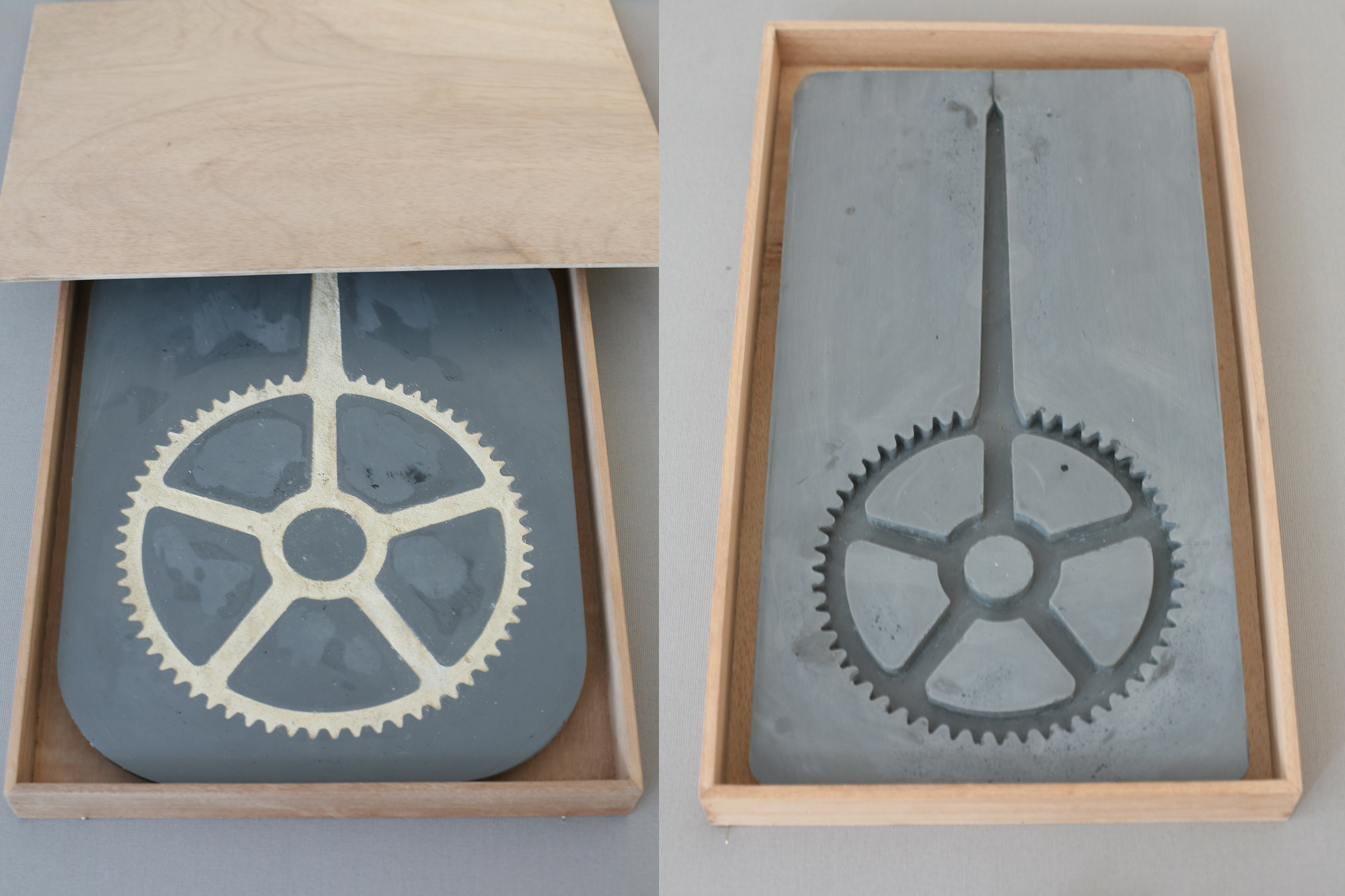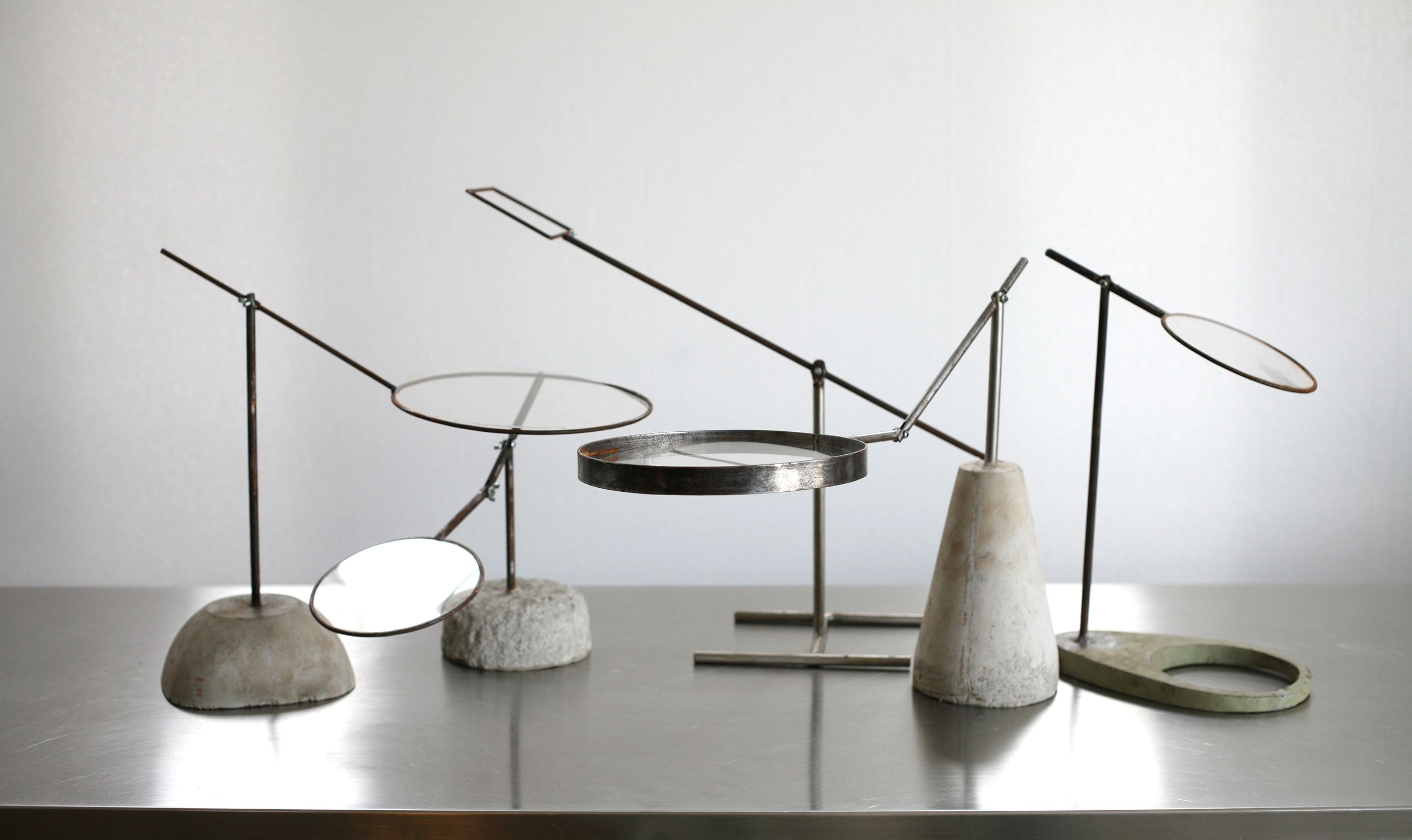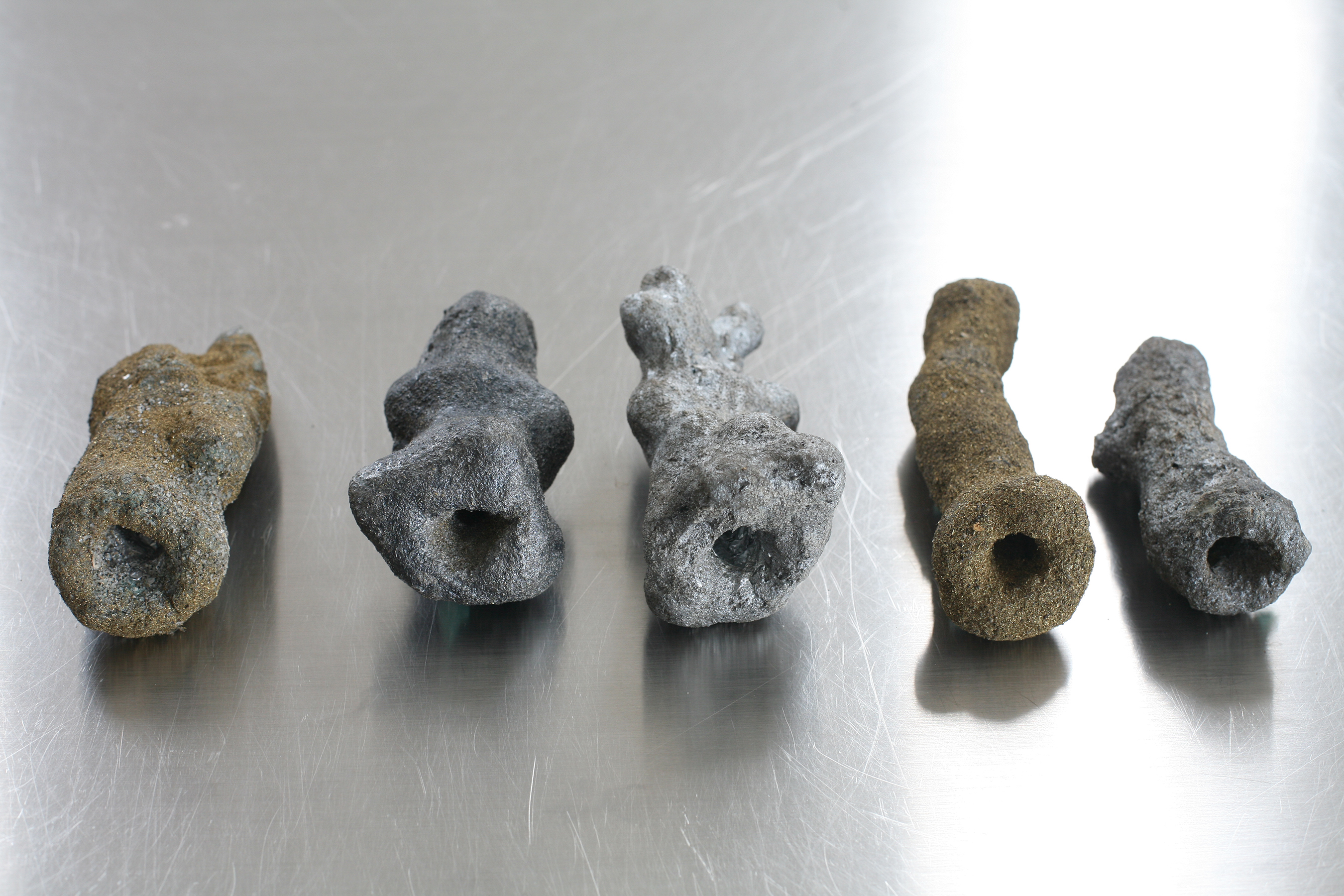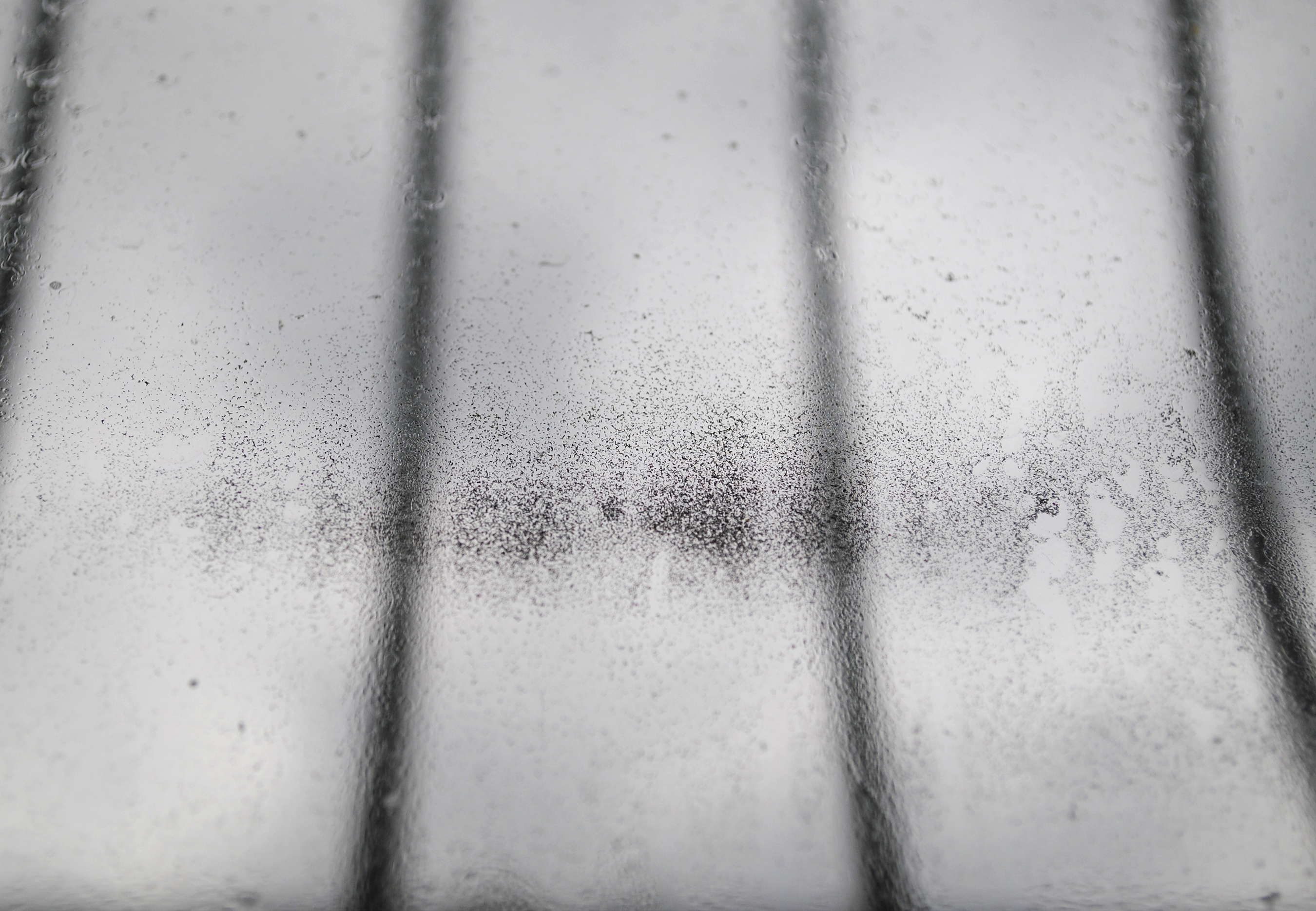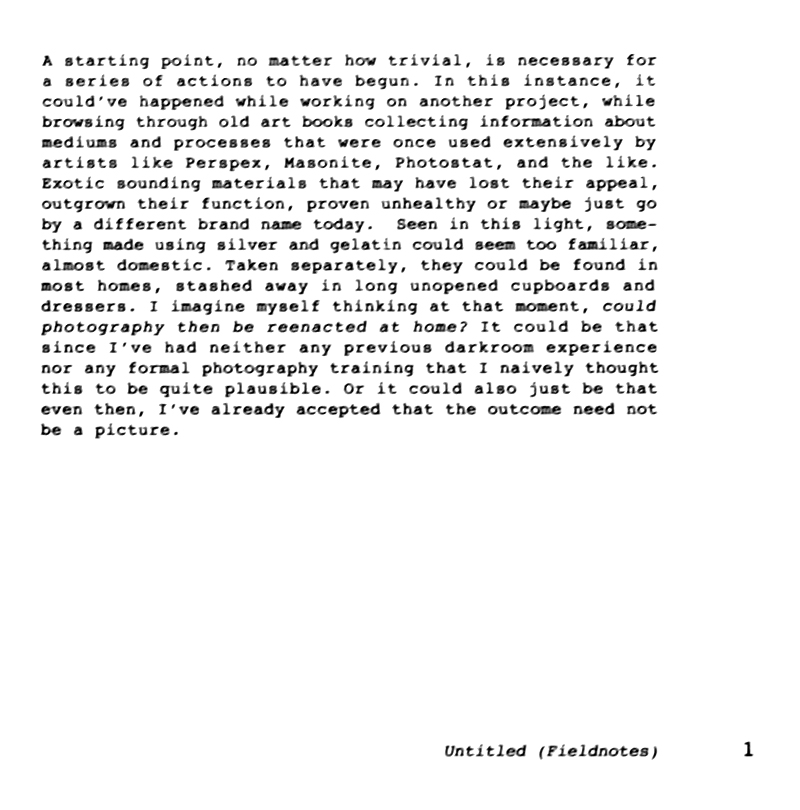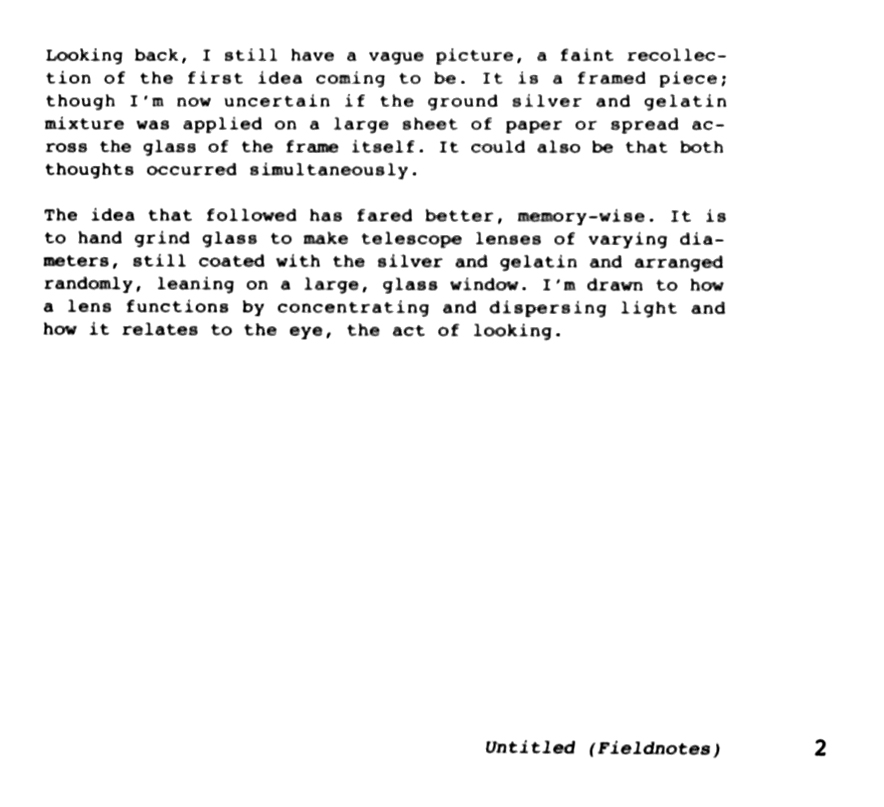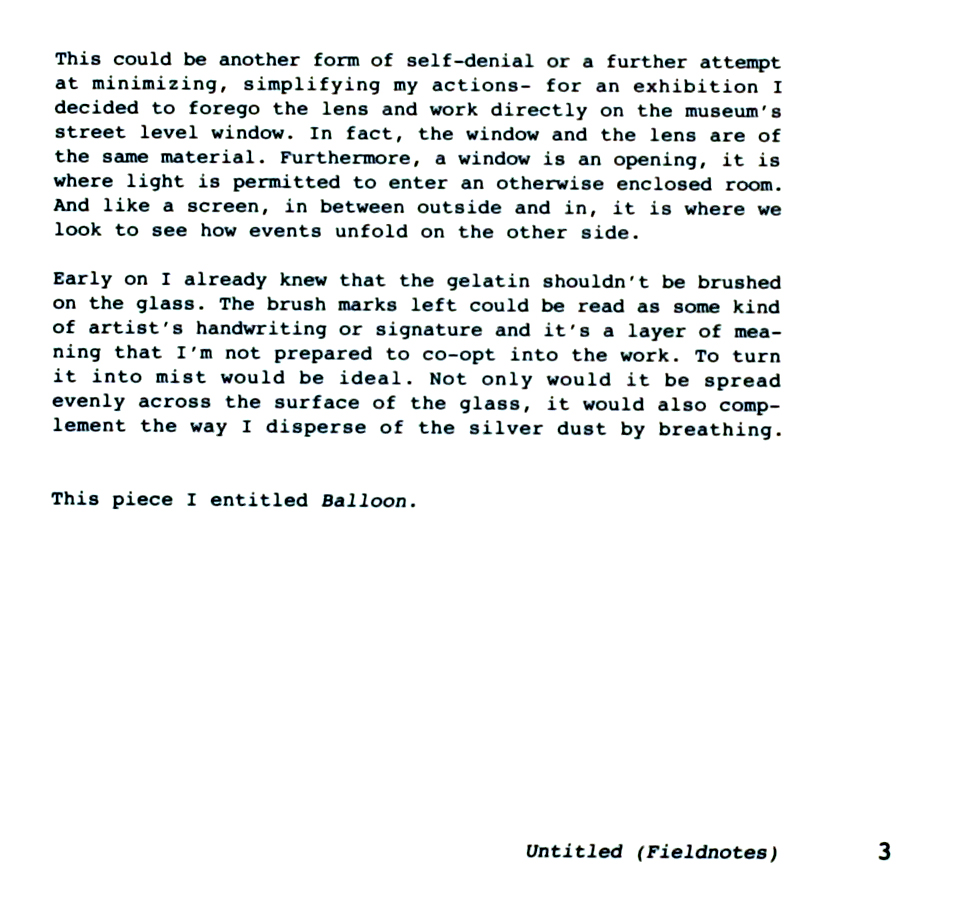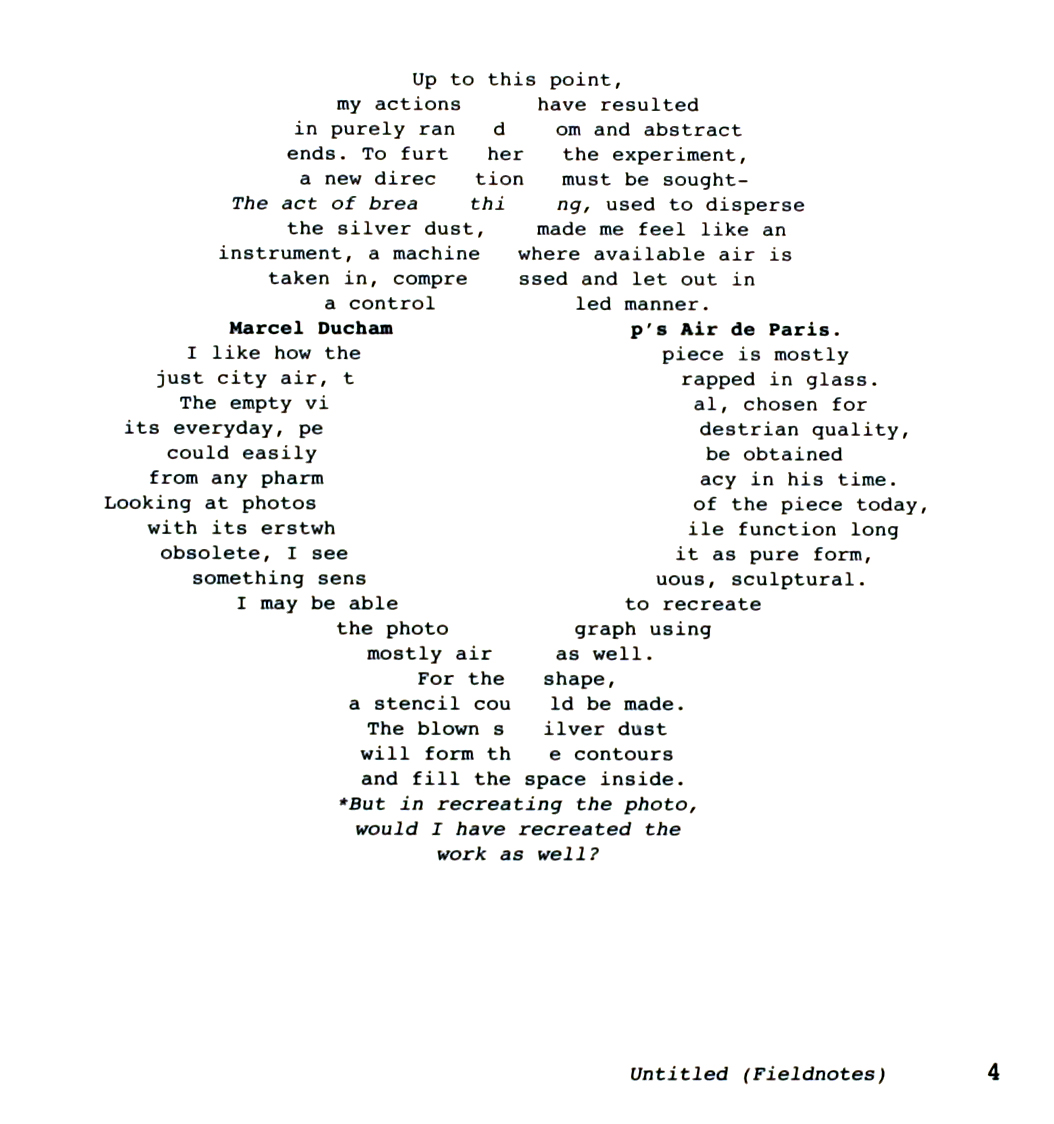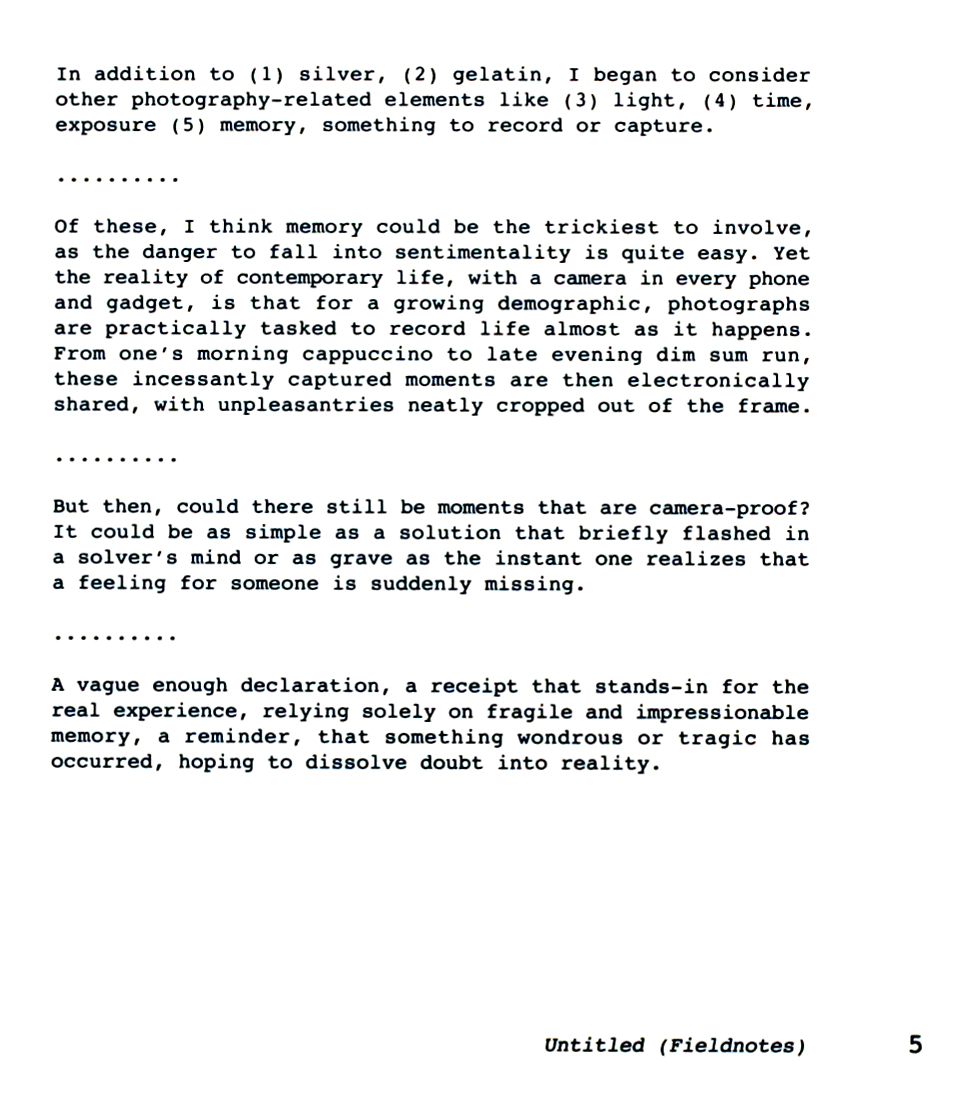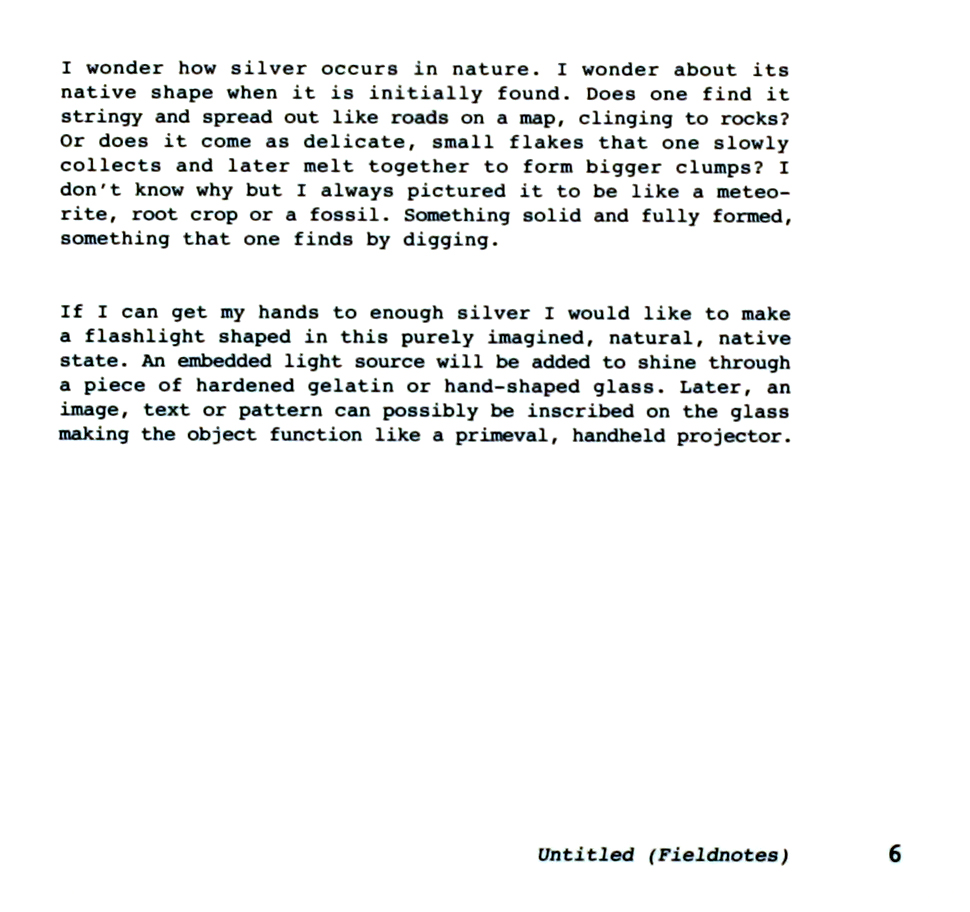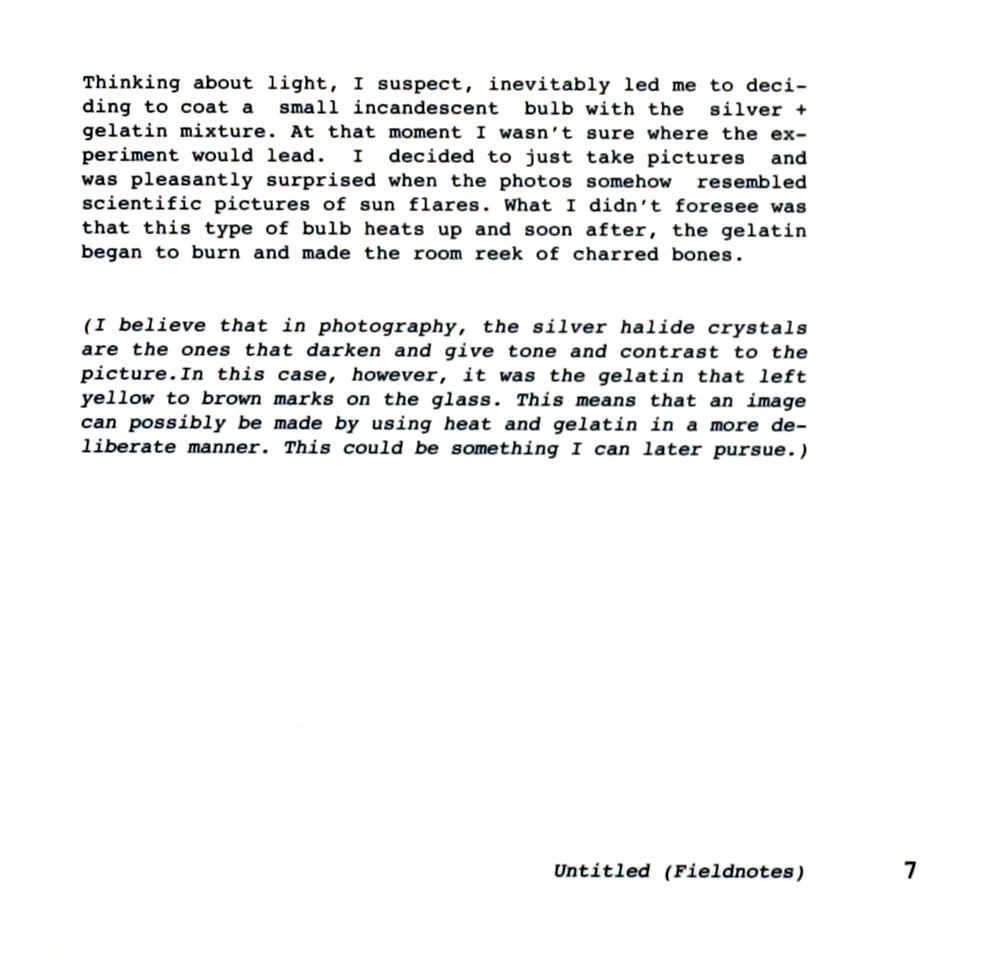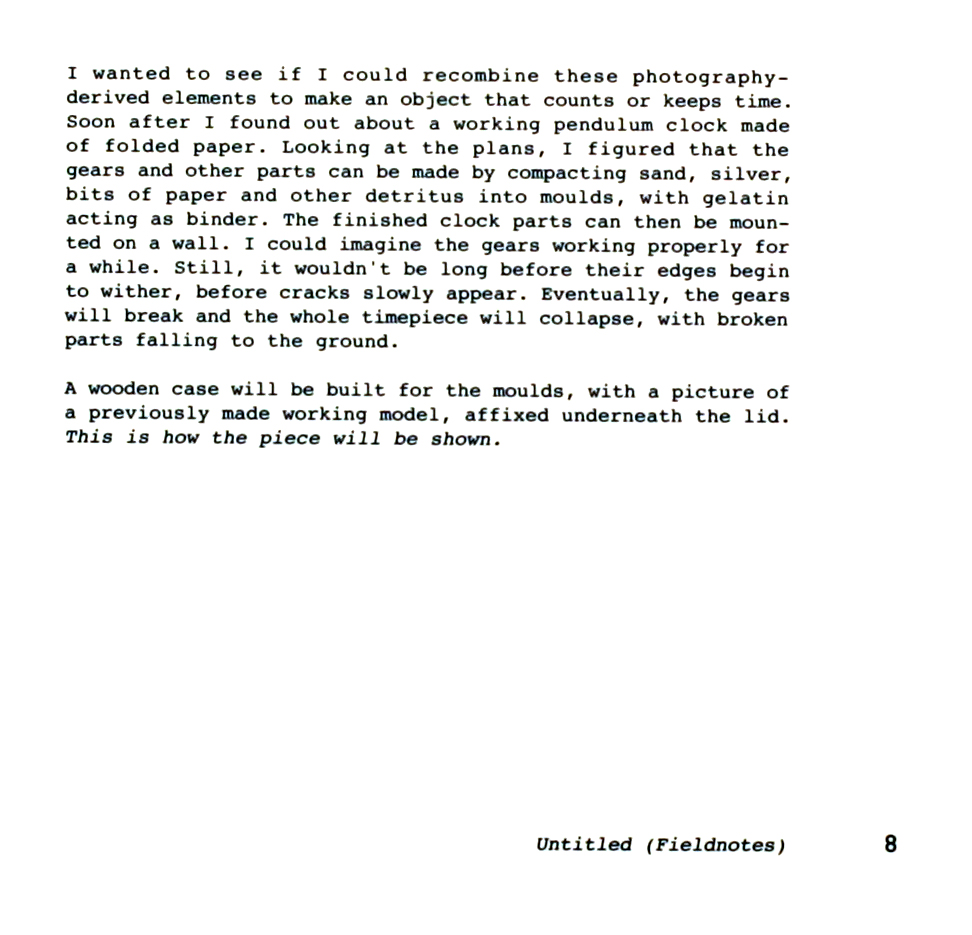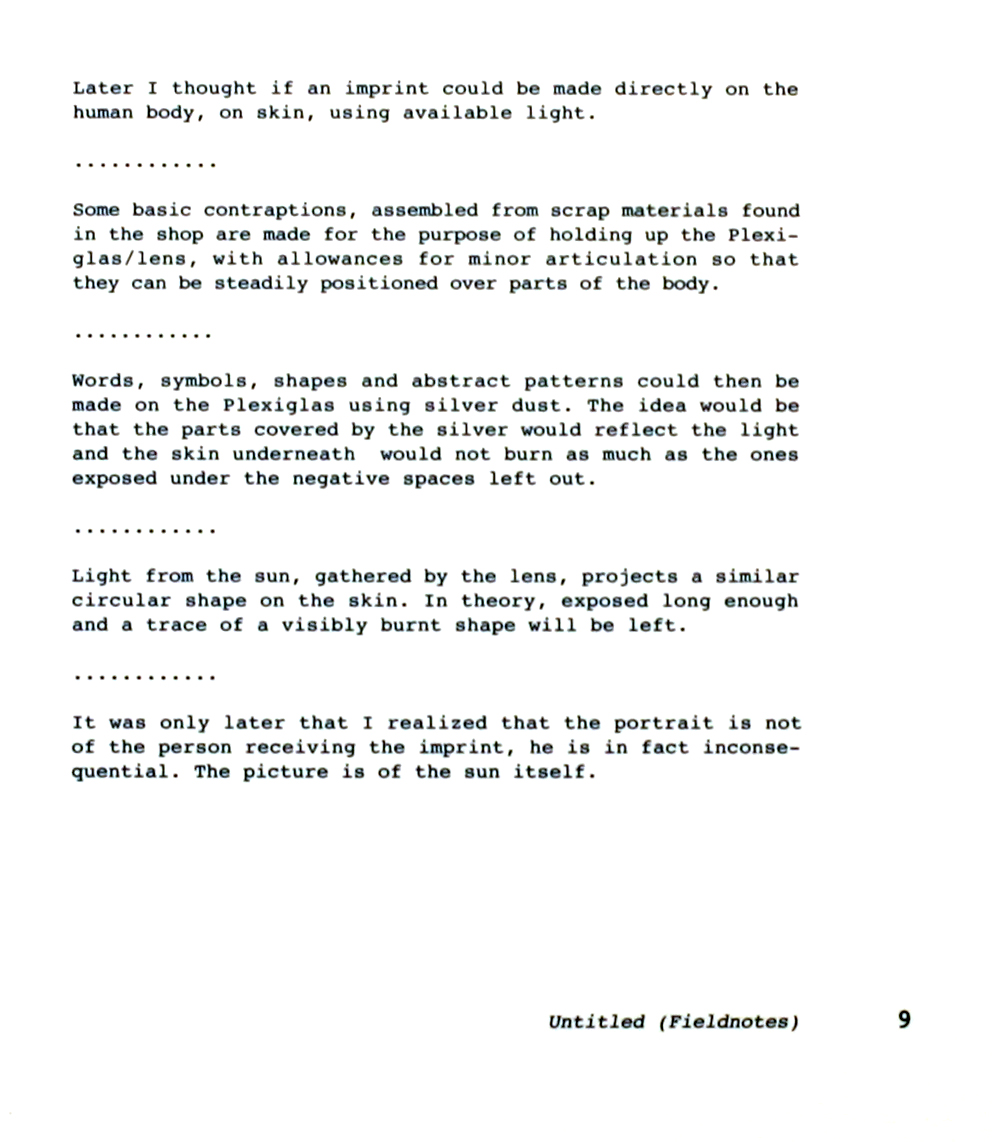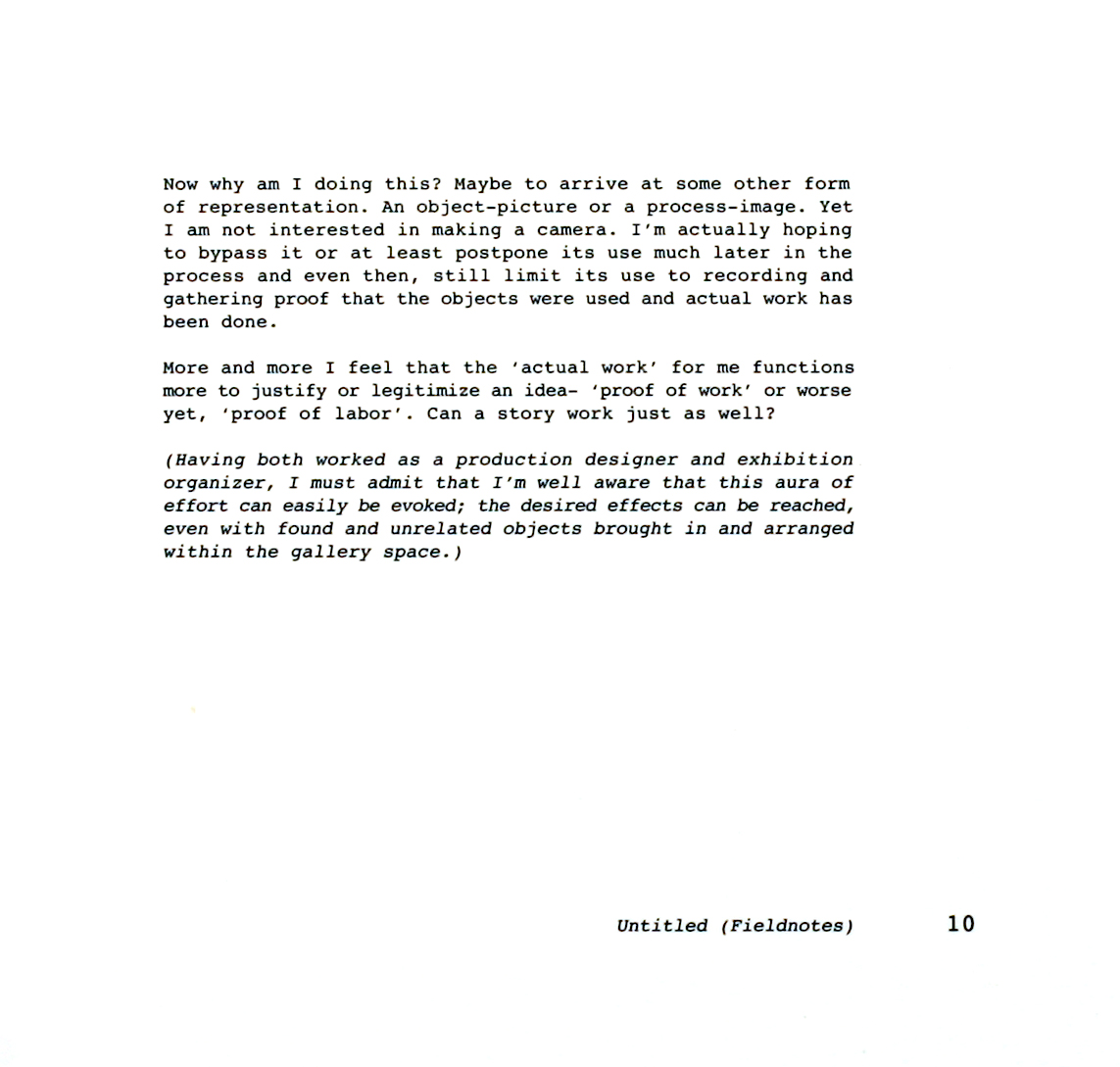On (or before) Photography / The silver + gelatin works
Gary-Ross Pastrana
Silverlens, Manila
Installation Views
About
Gary-Ross Pastrana, ever-resilient pursuer of art's peripheral possibilities and their after-effects, turns his attention towards the moment, or before, a residue of reality becomes eternal. In On (or before) Photography: The Silver+Gelatin Works, he recoils from the accelerated advancements of a whole new culture of image-making, to meditate on the device that forever changed the way we perceive the world and how we sustain our memories of it. Presented as a totalizing quest, both in form and meaning, On (or before) Photography, is a body of work that combines images, objects, and text to not only illuminate a method of producing art which Pastrana has continuallysearched,butalso topresentanewwayofexperiencingartinsidethe gallery.
He presents to us objects: tools, contraptions, together with their products and by- products, laid out across the gallery as an array of either instruments or relics that set the mind immediately into dialogue, questioning their relations, speculating for a gist. What holds them together are the texts: statements and musings printed out on the wall that run like journal entries or a scientist's logbook, the voice—never trying to explain but never stopping to reflect. The printed images inside a frame: photographs, captured moments, the end-result, the evidences from fieldwork, or maybe simply—a beautiful picture in itself. With Pastrana as perpetrator, these are all documents, attestations, which started out from a single question he was mulling over while in his own room with limited resources: “How can I photograph?” Down to the basic structure of a recorded picture Pastrana then tried to narrow it down as silver nitrate, gelatin, and available light, the main components that form the latent image from a film emulsion, and began grinding silver from a piece of jewelry, and dissolving gelatin from a regular confectioner. Thus, began Pastrana's inquest to the way we record and document ourselves against the world. From blowing silver dust and gelatin against a glass window pane to imprinting marks on skin by exposing it against sunlight interceded by a lens, photography’s operation is broken down into its bare essentials and in turn becomes a more intimate process of recording. Photography as we know it, which is supervised by triggering, in instantaneous fashion, a highly-evolved device to capture a moment, falls into a kind of enigmatic and prehistoric origin in Pastrana's hands. It closely resembles myth rather than invention, a myth which is highly personal, akin to a survivor's tale out in the wilderness, or in this case, how an individual dared to photograph and forced himself to imprint memory when cameras were totally out, so to speak, of the picture.
With the whole work in view, we are confronted with a narrative that can unfold in three ways: a narration through text, a narration through the evidence of objects, and a narration through the photograph itself. All of which are devices used by Pastrana to record and document a task he ascribed to himself of harnessing the proprieties of silver and gelatin to capture moments in time. It becomes a documentation of a process, and the process is about documenting memories itself, where process and the vicissitudes of form have always played an integral role in Pastrana's art. The formation of silver and the images defined through their exposure to light are as mutable as the agents he used to draw them from: breath, skin, and friction. While the whole process strives to instill a kind of imprinted permanence as one stencil plate for forming silver dustread,“ITREALLYHAPPENED.” Thephenomenonthatisphotography,while deconstructed and stripped down to its essential qualities, namely, light, lens, and silver gelatin, is then tested for its reliability to capture reality. And the same statement Pastrana used above can be appropriated as the whole declaration for the concept of his show—that as both artist and curator he would have pieced altogether these fragments from several stages of his work to amount into one moment, one reality, and laid out not different from a museum of artifacts or diorama, that these objects and evidences in unison did capture a moment or idea that was real. In this case, the realness is in the succession of thoughts about the nature of photography, and reality resides in the final piece of art rising from the whole puzzle, from the whole process, the whole performance, however open-ended and ephemeral it may seem.
The significance of Gary-Ross Pastrana's new work not only lies with the accumulation of several formats to enforce a single concept, but in how he combines the pieces to create a new tableaux to undermine our gallery-going experience and how we are supposed to look at an art exhibition, or to some extent, how to look for the artwork itself. Although perceived as highly conceptual and reminiscent of the propagators of art (from Joseph Kosuth to On Kawara) who carried their investigations through language and the combination of images, objects, and performances, Pastrana's work adheres more to the minimal stance achieved by most earth artists who choose to deal with the basic material of nature, and those who strive for simplicity and sincerity in search for an absolute form. Beneath the complexity of Pastrana's works is the desire to communicate what is essential.
On (or before) Photography: The Silver+Gelatin Works may or may not have a lot to do with photography, its history, or the whole discipline of darkroom techniques. It may have been brought out by the simple desire to take a photograph or the desire to approximate the act of taking pictures or to simulate the recording of one's memory. It may have even been brought about by a shared frustration with the German critic Walter Benjamin who predicted the loss of aura in art due to the easily reproducible prints from a camera especially in this digital age. What's all this about photography anyway? --to echo the title of a controversial 1979 article by the painter Richard Hennessy, who argued that photography is not real art and will never be. The show may or may not be about one or all of these things. However, it is more worthy to consider how Gary-Ross Pastrana uses the subject of photography to raise a more significant question in: Where do we look for his art? In the objects? In the process? Or does it merely lie in the succession of his thoughts? Or does it rest in the ambivalence that it tries to project, that art's essence in fact flourishes in the stages of uncertainties, of doubts, of crude attempts? Like stepping into a darkroom with a roll of film, with our sights handicapped, our hands groping, we remain in its darkness knowing it is the only way a latent image can be revealed. We remain hopeful, that art will reveal itself, will be in place, even before light touches silver.
Words by Cocoy Lumbao
Works

